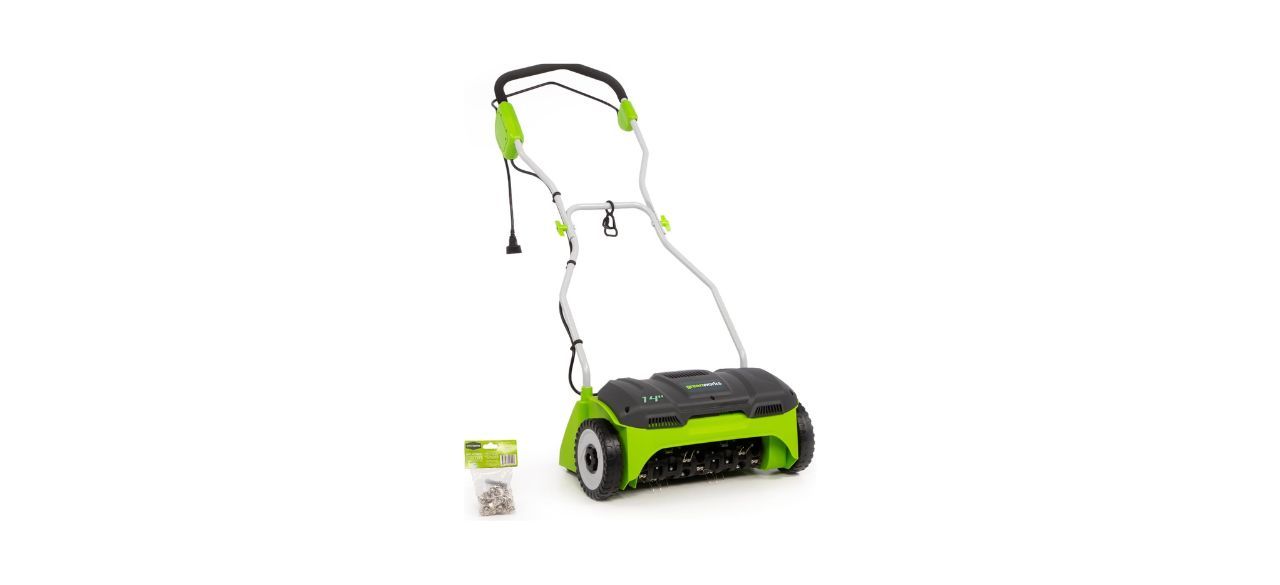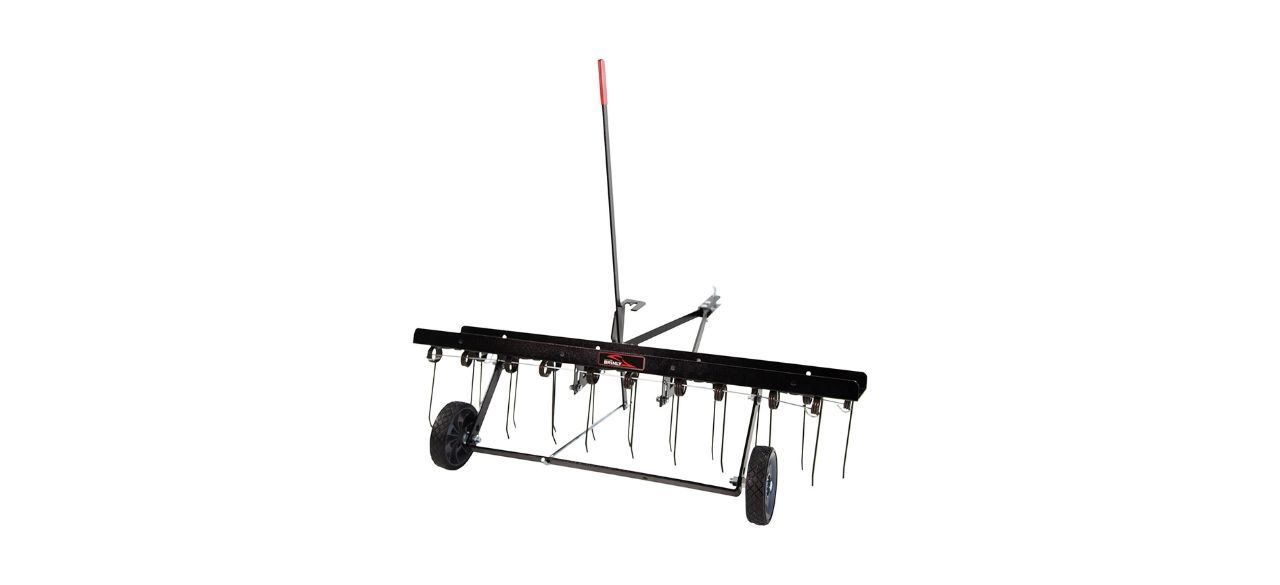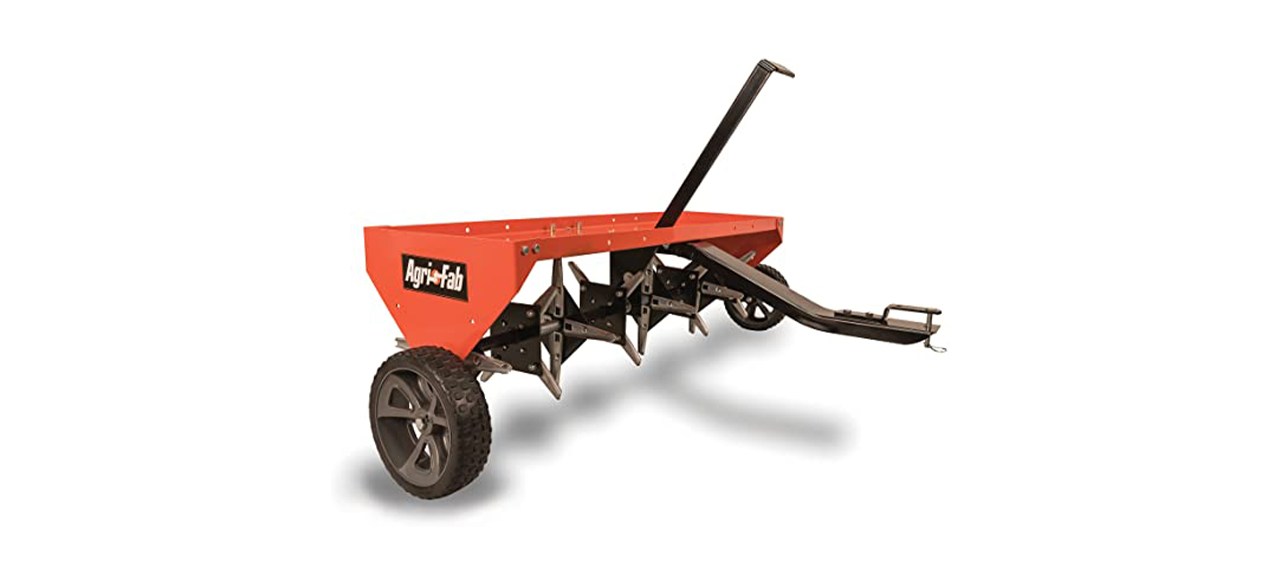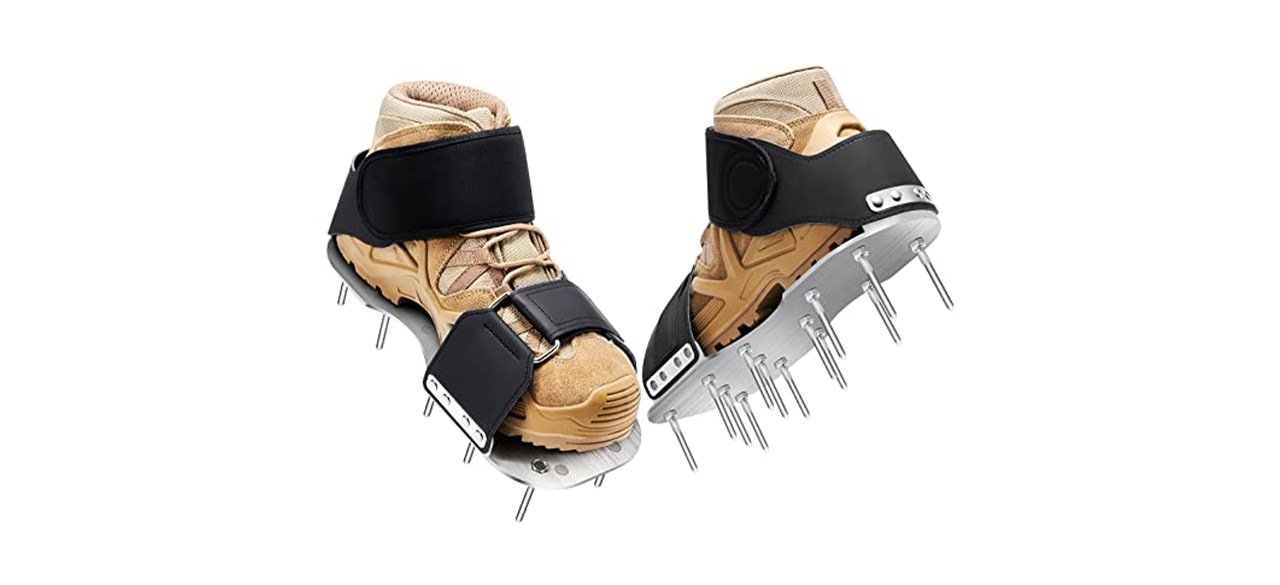To dethatch vs. aerate: Which does my lawn need?
When it comes to lawn care, chances are you need a combination of both dethatching and aeration. Both techniques are often essential to ensuring your lawn is lush and healthy. When it comes to dethatching vs. aerating, there are different tools and processes involved with both. Also, it’s usually better to dethatch the lawn before aerating it.
In this article: Greenworks 10-Amp Corded 14-inch Dethatcher, Brinly 40-Inch Tow Behind Dethatcher and Agri-Fab 45-0299 48-Inch Tow Plug Aerator
Dethatching the lawn
Dethatching is the process of removing thatch from the lawn. Thatch is a combination of organic and inorganic matter that builds up over the topmost layer of your grass. It generally consists of leaves, stems and roots. These materials form a barrier that prevents essential resources such as sunlight, water, nutrients and oxygen from reaching the grass roots.
Some thatch — no more than half an inch — is beneficial for the lawn because it can protect it from extreme heat and help keep the soil moist without blocking resources. It can also decay over time and act as a natural fertilizer for grass.
However, too much thatch can prevent the grass from growing. It can also cause dead spots in the yard. Left unchecked, it could even become a breeding ground for pests and plant disease or rot. If you have too much thatch on your lawn, you need a dethatcher.
When it’s time to dethatch your lawn, there are three main types to consider:
- Tow-behind: These attach to the back of a standard lawn mower or riding mower and can remove thatch as they go. They’re great for larger lawns.
- Manual: These require you to push or pull them to break up thatch. One of the most common types is the dethatching rake. This type is best for small yards.
- Motorized or electric: These dethatchers usually have a motor and require a power source to operate. They’re ideal for larger areas.
Dethatchers have tines or claws and can loosen or break up thatch as they go. Some collect the thatch in a tray you can empty once you’ve finished the process. Others leave the thatch behind for you to rake up manually.
Dethatching pros
- Provides grass more access to resources such as sunlight, water, fertilizer and nutrients, so it can grow into a healthy lawn.
- Inspires growth of newer, smaller grass shoots.
- Makes fertilizer more effective.
- Decreases the number of weeds.
- Lowers the risk of plant disease and pests.
- Gets rid of standing water such as puddles.
Dethatching cons
- Can cause stress in the yard if done at the wrong time, leading to stunted growth.
- Higher-tier equipment can be expensive.
- Manual dethatchers are time-consuming and laborious.
- Removing all thatch could also get rid of necessary nutrients or fertilizer, which could hurt the lawn.
Best dethatcher picks
Greenworks 10-Amp Corded 14-inch Dethatcher
This ergonomic dethatcher has durable stainless steel tines that can easily break up clumps of thatch. It includes a full set of replacement tines (36 in total). It features an ergonomic padded grip with an adjustable handle for working in comfort. This model is best suited for light to moderate thatch.
Sun Joe 15-Inch 13-Amp Electric Dethatcher and Scarifier
This versatile unit functions as both a dethatcher and aerator. The 15-inch width is ideal for small and medium-sized yards. It features sturdy stainless steel tines, five-position depth adjustment and a 13.2-gallon collection bag.
Brinly 40-Inch Tow-Behind Dethatcher
This tow-behind dethatcher easily attaches to a lawnmower or tractor and can automatically break up and remove thatch. It comes with two rows of 10 steel tines and is 40 inches wide. It has a durable all-steel design and can support an additional 70 pounds for lawns with a lot of thatch or tough soil.
Aerating the lawn
Over time, the soil becomes compacted. This can happen for several reasons, including foot traffic and heavy equipment placed in the yard. Compacted soil prevents oxygen, nutrients and water from reaching the grass roots. Without these necessary resources, the grass will start to turn brown, thin out and eventually die.
That’s where aeration comes in. Aeration is the process of loosening up compacted soil by creating small holes so nutrients and other resources can get to the grass roots. In terms of when you should aerate your lawn, aim for once every year or if you notice the soil is starting to become compacted. If you’re not sure, here are some ways to tell if it’s time to aerate:
- Push a screwdriver down into the ground. If it goes down easily, the yard probably doesn’t need aeration yet. If it doesn’t, you may need to aerate.
- Dig a small hole in the yard. It should be deep enough for you to see the grass roots — usually, 5 to 6 inches is enough. If the roots are only about an inch long, you should aerate the lawn.
- Check for standing water. If puddles are starting to form in places they didn’t before, it could be a sign that the soil is too compacted to absorb water.
- Look for thinning grass or discoloration. Thin or brown patches of grass aren’t getting the resources they need. This could be a sign that it’s time to aerate.
There are several types of lawn aerators, including:
- Tow-behind or attached: These attach to the back of riding equipment, such as a lawnmower. They’re ideal for larger areas.
- Manual: With either a spike aerator or aerator shoes, you’ll use these manually to create small holes and loosen up compacted soil.
- Motorized or electric: These run on electricity or gas and can aerate large sections of the lawn at once.
- Core and spike: Core aerators remove plugs of soil so resources can reach the roots. Spike aerators push down the soil to create small holes between 2 and 4 inches deep.
Aerating pros
- Can promote healthier grass easily.
- Helps prevent potential yard erosion.
- Can reduce the need for dethatching.
- Prevents standing water.
- Helps manage weeds.
- Reduces how much fertilizer you need.
Aerating cons
- Core aerators leave soil plugs throughout the yard that require manual removal.
- Spike aerators can cause soil to become more compacted in certain areas.
- Electric or tow-behind lawn aerators are often expensive.
- Manual aeration is time-consuming and physically intensive.
Best lawn aerator picks
Agri-Fab 45-0299 48-Inch Tow Plug Aerator
With 32 blades that can create 3-inch deep cores, this tow-behind aerator can easily handle large yards. It has flat tires that keep it from tearing up the soil. It also comes with a universal hitch that can connect to nearly any tractor or lawnmower.
Axansiho Upgraded Metal Lawn Aerator Spiked Shoes
These aerator shoes attach to nearly any shoe size and have a metal base plate that makes them resistant to corrosion. Each shoe has 13 spikes that are 2.2 inches long. They can aerate any soil type.
This is another manual model that’s relatively budget-friendly. It’s 36 inches wide and has a foot bar for driving the four 3-inch tines into the soil. It’s made of powder-coated stainless steel for enhanced durability. Weighing a mere 2.25 pounds with cushioned handles, it’s easy to wield and comfortable to use.
Dethatcher vs. aerator: Which tool do you need?
Ultimately, you should dethatch the lawn if there’s more than half an inch of organic matter blocking essential resources from the grass roots. You should also do this before aerating the lawn.
Dethatching on its own is sufficient if the grass is still lush and healthy and the soil is not heavily compacted. However, you should aerate the lawn once every year or two, or if the grass isn’t receiving the resources it needs.
Prices listed reflect time and date of publication and are subject to change.
Check out our Daily Deals for the best products at the best prices and sign up here to receive the BestReviews weekly newsletter full of shopping inspo and sales.
Copyright 2024 BestReviews, a Nexstar company. All rights reserved.
































































